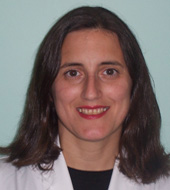Summary
Definition
History and exam
Key diagnostic factors
- ingestion of contaminated foods
- infant age group
- biologic terrorism
- blurred vision and diplopia
- impaired accommodation
- ptosis
- oculobulbar weakness
- hypoglossal weakness
- dysarthria
- dysphagia
- symmetrical descending flaccid paralysis
Other diagnostic factors
- hypotonia
- weakened cry in infants
- feeding difficulties in infants
- postural hypotension
- hypothermia
- urinary retention
- constipation
- dry mouth and throat
- gastrointestinal illness
- diminished or absent deep tendon reflexes
- absence of fever
- respiratory dysfunction
- pupillary dilation
Risk factors
- ingestion of contaminated foods
- ingestion of honey in infants
- ingestion of soil in infants
- intravenous drug use
- crush injury
- infant age group
- abnormal bowel anatomy
- therapeutic or cosmetic use of botulinum toxin
- biologic terrorism
- exposure to reptiles
Diagnostic tests
1st tests to order
- mouse bioassay of serum, gastric secretions, stool, or food samples
- culture of food samples, gastric aspirates, or fecal material
Tests to consider
- electrophysiologic testing
Emerging tests
- enzyme-linked immunosorbent assay (ELISA)
- polymerase chain reaction (PCR)
Treatment algorithm
foodborne botulism
wound botulism
iatrogenic botulism
inhalational botulism (biological attack)
Contributors
Authors
Linda S. Nield, MD, FAAP

Professor of Pediatrics and Medical Education
West Virginia University School of Medicine
Morgantown
WV
Disclosures
LSN is an author of a reference cited in this topic.
Acknowledgements
Dr Linda S. Nield would like to gratefully acknowledge Dr Thomas P. Bleck, Dr Aimee Hodowanec, Dr Pavani Reddy, and Dr Teresa Zembower, previous contributors to this topic.
Disclosures
TPB, AH, PR, and TZ declare that they have no competing interests.
Peer reviewers
Fiona Cooke, MA, PhD, MSc, FRCPath, MRCP, DTM&H
Research Fellow and Medical Microbiologist
Wellcome Trust Sanger Institute
Department of Microbiology
Addenbrooke's Hospital
Cambridge
UK
Disclosures
FC declares that she has no competing interests.
Christopher D. Huston, MD
Assistant Professor of Medicine
Division of Infectious Diseases
University of Vermont College of Medicine
Burlington
VT
Disclosures
CDH declares that he has no competing interests.
William A. Petri, Jr, MD, PhD, FACP
Chief and Professor of Medicine
Division of Infectious Diseases and International Health
University of Virginia Health System
Charlottesville
VA
Disclosures
WAP declares that he has no competing interests.
Peer reviewer acknowledgements
BMJ Best Practice topics are updated on a rolling basis in line with developments in evidence and guidance. The peer reviewers listed here have reviewed the content at least once during the history of the topic.
Disclosures
Peer reviewer affiliations and disclosures pertain to the time of the review.
References
Key articles
Rao AK, Sobel J, Chatham-Stephens K, et al. Clinical Guidelines for Diagnosis and Treatment of Botulism, 2021. MMWR Recomm Rep. 2021 May 7;70(2):1-30.Full text Abstract
Arnon SS, Schechter R, Inglesby TV, et al. Botulinum toxin as a biological weapon: medical and public health management. JAMA. 2001 Feb 28;285(8):1059-70. Abstract
Centers for Disease Control and Prevention (CDC). Investigational heptavalent botulinum antitoxin (HBAT) to replace licensed botulinum antitoxin AB and investigational botulinum antitoxin E. MMWR Morb Mortal Wkly Rep. 2010 Mar 19;59(10):299.Full text Abstract
Arnon SS, Schechter R, Maslanka SE, et al. Human botulism immune globulin for the treatment of infant botulism. N Engl J Med. 2006 Feb 2;354(5):462-71.Full text Abstract
Reference articles
A full list of sources referenced in this topic is available to users with access to all of BMJ Best Practice.

Differentials
- Guillain-Barre syndrome (GBS)
- Myasthenia gravis
- Tick paralysis (Dermacentor)
More DifferentialsGuidelines
- Clinical guidelines for diagnosis and treatment of botulism, 2021
- Botulism - guide for healthcare professionals
More GuidelinesLog in or subscribe to access all of BMJ Best Practice
Use of this content is subject to our disclaimer